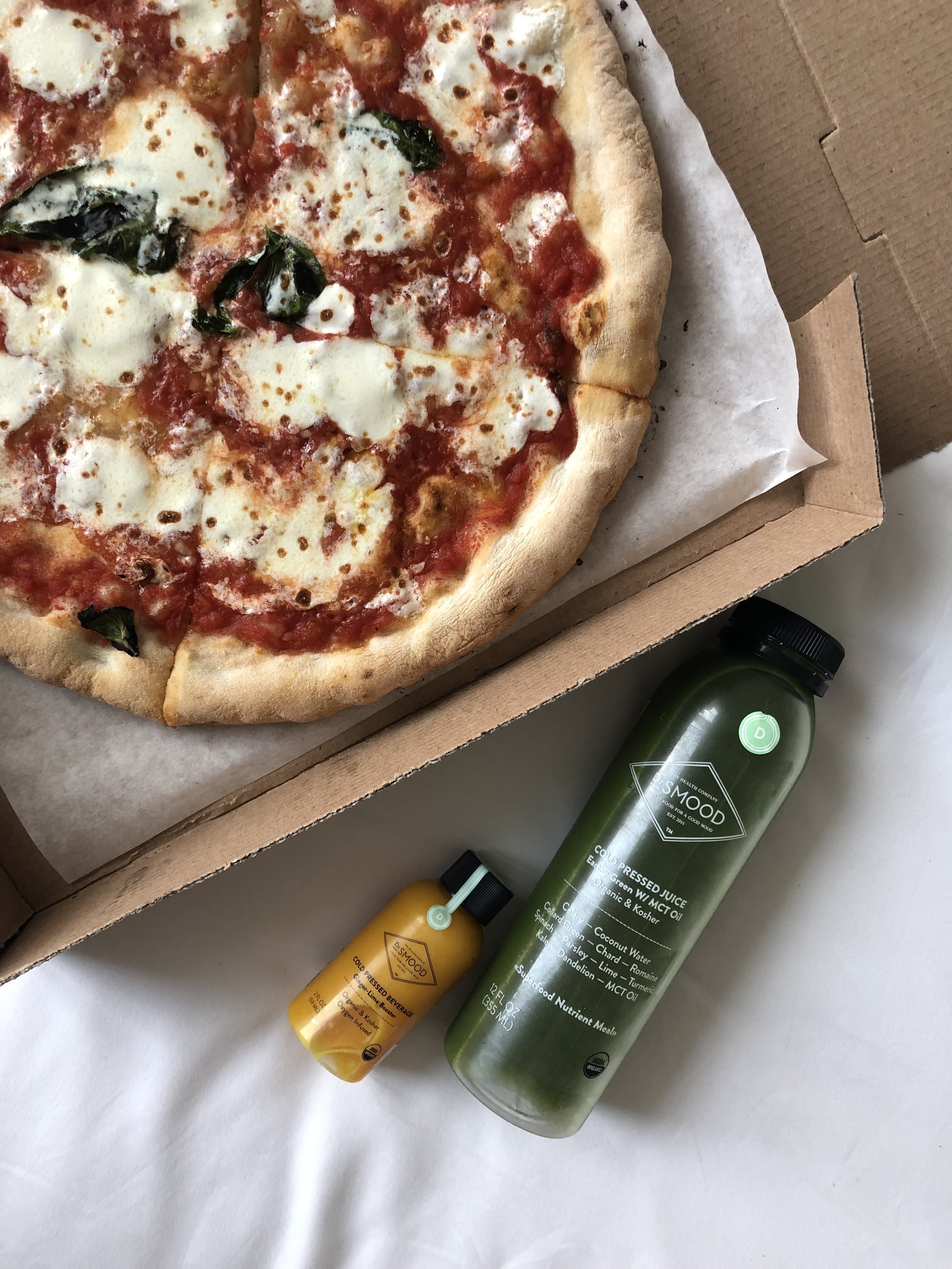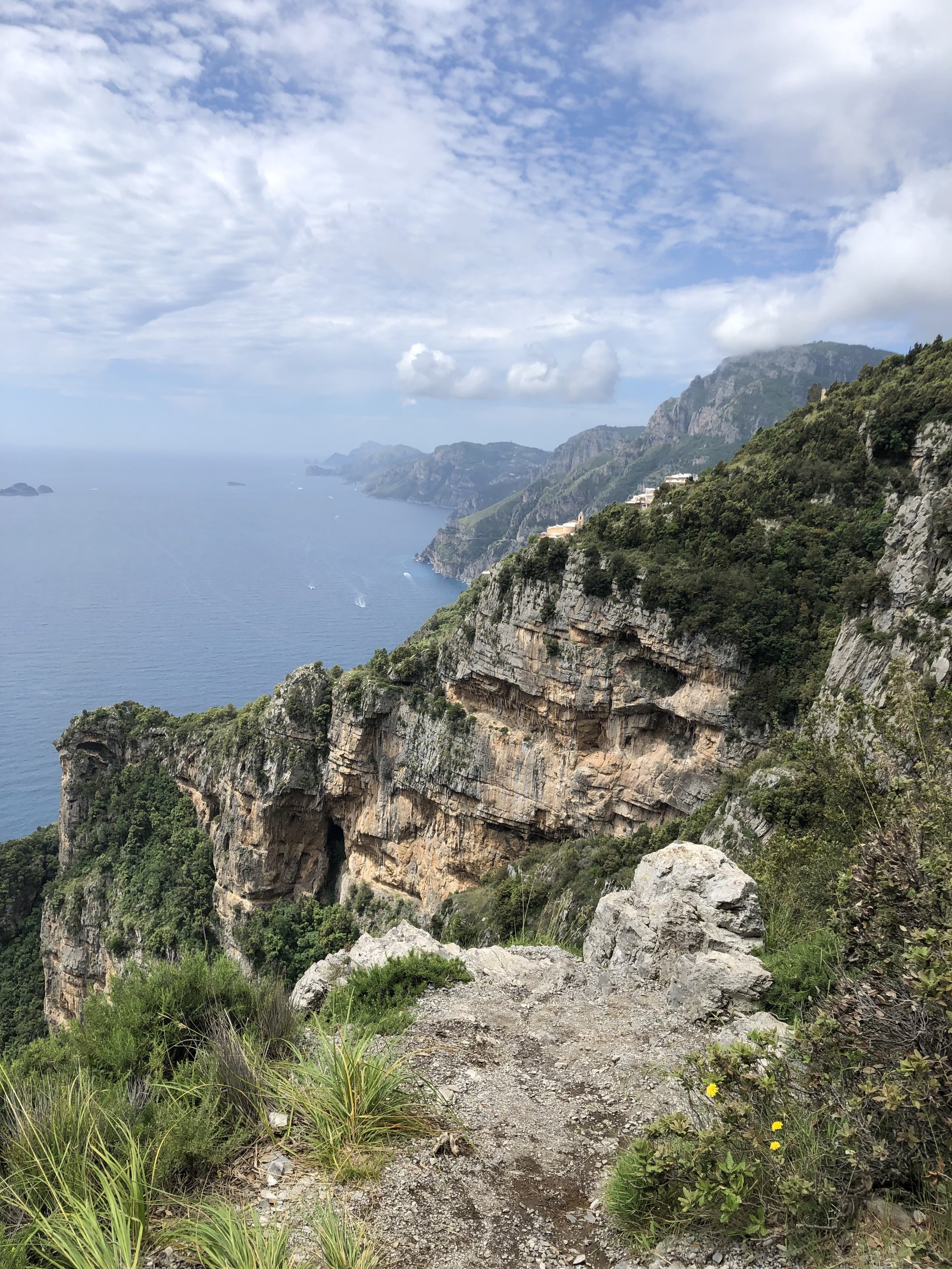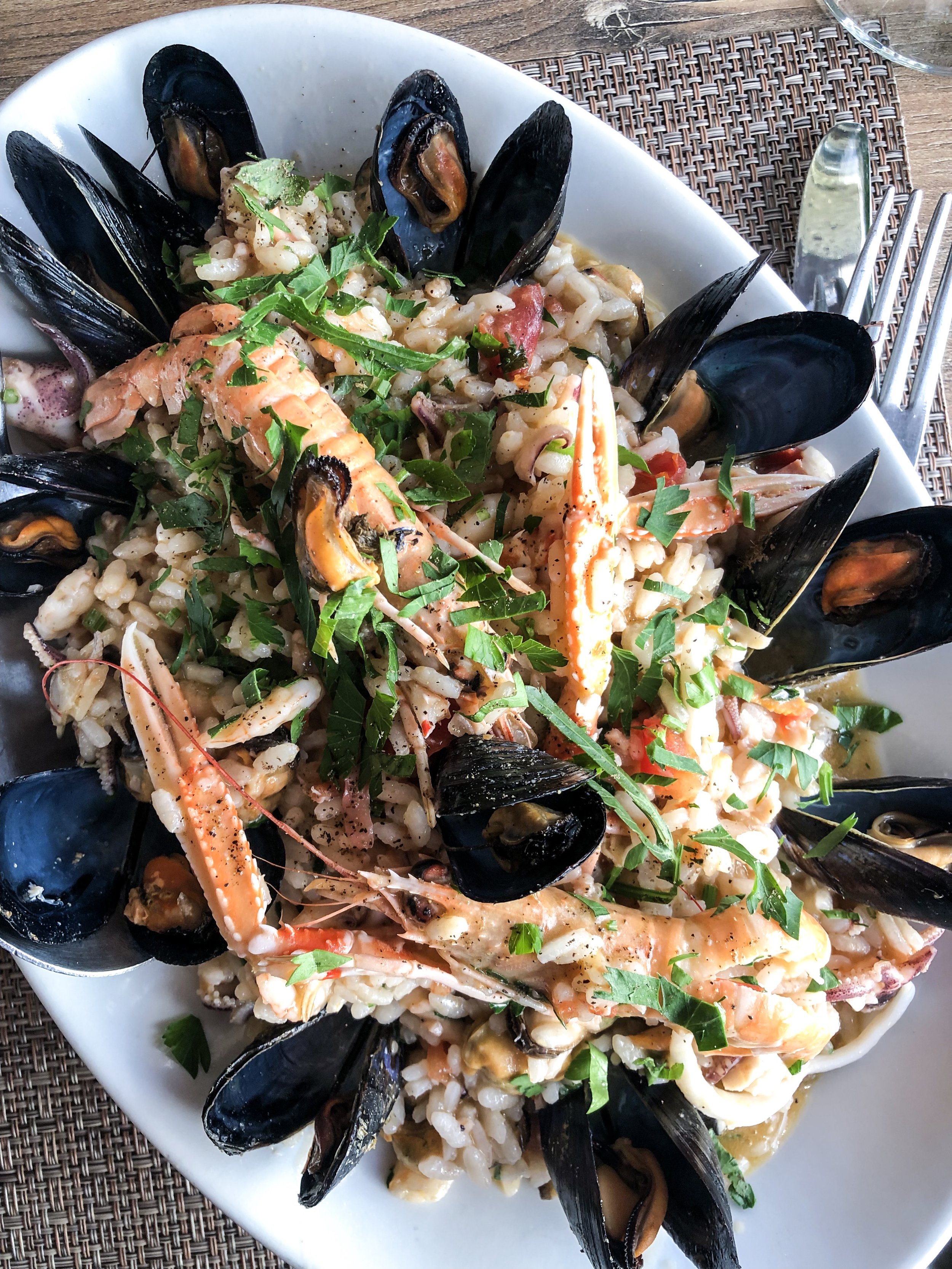Chances are, you’ve probably been hearing about CBD left, right, and center for a while now. Maybe you’ve even tried it out yourself, or maybe you still have questions. I started using it about a year ago to help reduce inflammation, support sleep, and manage pain from things like headaches and cramps. I’ve tried dozens of brands, and have always found myself coming back to one that really WORKS: Viva Oils.
I’ve had the opportunity to talk with the founders of the company on many occasions now to learn more about their sourcing, extraction methods, and quality controls, and can confidently recommend Viva as a brand that I trust!
Since there is still a lot of confusion out there about CBD, I thought I’d share an article written by a nurse, Romy, who is also one of the partners of Viva. After reading this article, if you want to try some for yourself, you can get 10% off your order with code wholedailylife!
At the end, I’ll share the specifics of exactly what I take and how I use it, so stay tuned for that!
What is CBD?
Over the last few years, we have had more access to hemp derived CBD, as laws around the country have changed. There is now a CBD marketplace. With it comes so much choice!
CBD stands for cannabidiol (pronounced can·na·bi·di·ol) – doesn’t exactly roll off the tongue, does it? But, what this wonderful phytocannabinoid is doing, is providing an alternative for people that are exhausted with the traditional medical approach to addressing health concerns.
CBD is one of about 100 cannabinoids found in both hemp and marijuana (both subspecies of Cannabis). The more commonly known and better understood “illicit cousin” to CBD is the cannabinoid THC. Although close relatives, CBD and THC interact very differently with the body. The psychoactive effects that we all attribute to Cannabis, come from THC alone. CBD will not produce a psychoactive effect and it will not leave you feeling high. Although both CBD and THC hold beneficial properties, “CBD can be given at very high doses” because it has minimal to no side effects. Not the case for THC, which can cause adverse effects when taken in high amounts.
Research shows that CBD holds many beneficial properties:
✓ Analgesic (pain reliever)
✓ Anti-inflammatory (reduces inflammation)
✓ Neuroprotective (serves to protect nerve cells from damage or impairment)
✓ Anticonvulsant (acts to prevent or reduce convulsions)
✓ Antispasmodic (relieves spasm and involuntary muscle movements)
✓ Antiemetic (prevents nausea and vomiting)
What is the difference between Full Spectrum and Isolate CBD?
This is important information to know when deciding on a CBD product!
Full Spectrum CBD It is widely held that full spectrum CBD products that contain the full mix of cannabinoids and terpenes offer the greatest benefit, compounding and enhancing the effects that any single compound can provide alone. Compare it to eating an orange – removing the Vitamin C and taking it as a supplement every day is great. However, eating the whole orange offers greater health benefit overall. Full spectrum CBD products contain trace THC (<0.3%) as per federal regulation. This is enough THC to provide benefit, without causing the user to feel high or impaired.
Isolate CBD These products contain only CBD. All other cannabinoids and terpenes are removed. Isolate CBD products cannot produce the wide-ranging benefit that full spectrum products can provide. However, for some people this is a good option.
Where does CBD come from?
Both hemp and marijuana plants contain CBD. However, most of the CBD products available on the market are derived from hemp. Why? Hemp contains very low concentrations of THC and high concentrations of CBD (and other cannabinoids).
The distinction between hemp and marijuana:
Both hemp and marijuana are plant species that belong to the Cannabis genus. The main determinant as to which-is-which, is THC content (by dry weight volume).
✓ Plants that contain greater than 0.3% THC = marijuana
✓ Plants with less than 0.3% THC = hemp
What is the endocannabinoid system?
Great question, many people are beginning to hear about how important this body system is...
We all learned about the major body systems in biology class – the digestive system, nervous system, cardiovascular system... and the list goes on. However, there is another body system recognized by science. There’s a chance that you have not heard about it yet... It is called the endocannabinoid system. A mouthful, I know! Let’s call it the ECS for short
The ECS is considered our homeostatic regulator and it “is one of the most important physiological systems involved in establishing and maintaining human health.”
The ECS has been understood and appreciated for less than thirty years. A small time period of scientific awareness. It is essentially a body wide cell signaling system. It promotes homeostasis – in other words, it works to brings balance to the body – and it has a profound effect on our ability to control pain, inflammation, sleep, mood, memory, reproduction and immune system control. The ECS is made up of three main components – receptors, endocannabinoids and the enzymes that form and break down the endocannabinoids. Here’s a quick description...
Endocannabinoids: Our body produces compounds called endocannabinoids. Think of these as cannabis-like chemicals that relay signals to cells throughout the body – cells in our “brain, organs, connective tissue, glands, and immune cells”. Our body produces these chemical messengers on demand to respond to internal and environmental insults. This is anything that causes or has the potential to cause harm to our body. Examples? Internal insults could be inflammation, disease, stress or anxiety. Environmental insults describe threats to the body from the outside – such as trauma from injury or interaction with a bacterium, virus, fungi or any other contaminant that may be in our air, water and soil. Whether they are physical, chemical or biological, they could pose risk to our health... and our ECS is ready and waiting to respond.
Cannabinoid Receptors: The cannabis-like chemical messengers (endocannabinoids) that we just learned about, interact with cannabinoid receptors found in cells throughout our body. The endocannabinoid fits into the receptor; as a key would to a lock. The message is delivered to the cell, and an action results.
Enzymes: Lastly, there are enzymes that make-up and degrade our endocannabinoids.
Now we know the components of the ECS – a system that works to achieve homeostasis through responding to anything that poses harm to the body, right down at the cellular level.
Scientists believe that many of us live with a clinical endocannabinoid deficiency (CED) – described as a loss of “endocannabinoid tone” and function. The ECS is not working optimally and a loss of balance results. CBD and other naturally occurring cannabinoids found in hemp, could provide the gentle nudge that we need.
How does CBD interact with the body?
Complete “balance” throughout our body – homeostasis within scientific circles – is unfortunately an unachievable expectation. A pot of gold at the end of the rainbow, so to speak. Every system within our body is relentlessly working to achieve this goal with the prize of optimal body function. Despite best efforts, many of us cannot get there. We could benefit from a little help. The many compounds within hemp could provide the answer.
Research shows that CBD can help to support our endocannabinoid system and enhance our body’s signaling capabilities.
An ECS operating at a sub-par level can result in body wide imbalance:
✓ Lower pain threshold
✓ Persistent inflammation
✓ Digestive woes
✓ Mood imbalances
✓ Sleep abnormalities
The question is, how can a sluggish ECS benefit from some gentle persuasion? This is where CBD comes in – it enters our bloodstream and once delivered to our cells, it encourages them toward more optimal function. Fact is, CBD does not directly interact with the cannabinoid receptors on the surface of our cell nucleus. Instead, it encourages the body to produce more naturally occurring endocannabinoids that, in turn, activate our receptors.
Wait, there’s more? Using CBD offers a multi-pronged effect on the body. The enzymes that we spoke about earlier – they are responsible for making and breaking down our endocannabinoids – CBD can block their break-down action. The result? More cannabis-like endocannabinoids available to our cell receptors. Now that we have more endocannabinoids on board, they can get back to work activating our receptors. Isn’t that great? Come on body, you can do it!
What is the best way to take CBD?
The CBD marketplace offers so much choice! It can be confusing to know where to start. Tinctures, oils, salves, capsules, gummies, cookies, coffee, chocolate, water…
With the current nature of the CBD industry, there are many gimmicky products wrapped up with endless promises of success. It is possible to get pulled into a marketing ploy and be left believing that you can gummy your way to good health. This is simply not true!
When you immediately swallow CBD products, the precious cannabinoids are sent to your liver, which acts as a filter, leaving very little CBD to circulate through your bloodstream and finally reach your cells – this is where they need to do their work.
Instead, a method of administration should be found that bypasses the digestive system. Research shows that absorbing CBD sublingually, topically or through inhalation avoids first-pass metabolism by the liver.
Sublingual: This is the most commonly reported method of CBD administration. The reason? It works. Research shows that close to 30% bioavailability is reached with this method. That is, the mucous membranes in our mouth allow for the CBD to absorb directly to our bloodstream. This bypasses the “first-pass” through the liver allowing for a higher concentration of CBD to be delivered to the cells in our body that need a little nudge towards better function. Still want to take your CBD in the form of gummies or capsules? With these methods, the amount to reach your bloodstream is closer to 6% (does not compare!).
Tips for success with the sublingual method:
✓ Choose a high-quality CBD oil – very important to success!
✓ Hold beneath your tongue for 60-90 seconds (the longer the better)!
✓ Although CBD absorbs through the membranes in the mouth with the sublingual method, absorption does continue once swallowed. Research shows that taking CBD with food in your stomach helps to increase absorption. Increase your chances of success and take your CBD oil sublingually, immediately before or after a meal.
Topical: Another way to sneak around our liver and ensure maximum absorption to the bloodstream is to apply your CBD topically. Direct absorption of CBD to target body locations is proving to be a game-changer for pain management. Research shows that this method can reduce inflammation by up to 50% post application. This is a significant finding!
Tips for success with the topical method:
✓ Choose a high-quality CBD oil or salve – this will make all the difference!
✓ Apply to areas of your body with pain or inflammation 2-4 times per day.
✓ Can be used to relieve dry itchy skin, sunburn, and bug bites.
Inhalation: Inhaled CBD enters the lungs, passes though the bloodstream and quickly crosses the blood-brain barrier. Effects are felt quickly, usually within 3-10 minutes. Vaporizing CBD could be beneficial as an add-on option (used as needed) for those with an already established sublingual and topical CBD regimen.
Tips for success with the inhalation method:
✓ Choose a high-quality CBD Vape Oil – especially with the nonsense that is available on the market, be sure to do your research.
✓ Not intended as your primary source of CBD – use on an as-needed basis.
✓ Avoid products that contain harmful fillers such as propylene glycol (PG) and vegetable glycerin (VG).
✓ Avoid if you have asthma, COPD or live with any shortness-of-breath
How do I know how much CBD to take?
Very good question. There are very few clear guidelines and many people that are new to CBD are left confused...
Besides the quality of the product and the method of administration, the next important key to the puzzle of finding success with CBD is – serving size!
Important to note, CBD use should be a self-experiment to find YOUR perfect serving size for YOUR individual needs and YOUR unique metabolism. The key point – everybody has an endocannabinoid system (ECS) that holds a different level of function (or dysfunction, in most cases). So, there is no one-size-fits-all recommendation.
However, research does give us the insight into where “therapeutic range” could be met with CBD – plus or minus, depending upon YOUR results.
The amount of CBD that you need is directly proportional to individual body weight.
For those with something greater than preventive health aspirations – with something specific that you are trying to address – this could be a guide for you to find “therapeutic range” ... 1mg CBD to every kilogram (kg) body weight (+ or -) depending upon results.
Pounds (lbs) to kilograms (kg)? Use this conversion: Your weight in lbs / 2.2 = Your weight in kg
Start low and go slow with CBD. This allows your body time to adjust to the introduction of CBD and it gives you the opportunity to find YOUR lowest possible serving size. Average starting serving sizes (for adults) is between 10mg-20mg CBD per day. On a weekly basis, increase your serving size by 10mg-20mg, until you have met your goals.
How do I find a reliable & safe CBD product?
Here’s a few things to look for...
✓ Consider extraction methods! The method that is used to extract the valuable cannabinoids and terpenes from the hemp plant determines the quality of the final product. The gold standard is CO2 extraction. Besides this, ethanol and other low-grade alcohols are used. Ask how your CBD product is extracted. Read labels. Very important information to know!
CO2 Extraction: Carbon dioxide (CO2) is the same gas that we exhale after inhaling oxygen. It is the same gas that plants take in to allow for the production of plant energy growth. It is all around us. It is a natural gas that can exist in several different phases. Solid CO2 is dry ice. Liquid CO2 is achieved by manipulating the pressure and temperature of the gas and is often used to fill the chambers of fire extinguishers. Gaseous CO2 is what animals exhale. And supercritical CO2 is the phase that exists between a gas and a liquid – called supercritical CO2. This is what we use to remove the CBD hemp extract from the plant. A very gentle solvent that preserves every component within the final full spectrum CBD hemp extract.
Ethanol Extraction: Over 80% of the CBD products on the market are extracted using this inferior method. Why? It is cheap and quick. Sad, but true! Unlike CO2, ethanol is a harsh solvent that strips the plant of many of the beneficial cannabinoids and terpenes. It also pulls out many undesirable plant materials (such as chlorophyll and plant waxes) that leave the oil green and bitter. To address the unpalatable taste, additional processing is needed.
✓ Study the ingredient list! Very often flavors and sugars are added to mask the unpalatable flavor of poorly extracted CBD products. Chocolate mint flavored CBD oil? Why? This should be an indicator to you that you are using an inferior product that has been extracted using ethanol (or acetone, butane or some other low-grade chemical). Remember, simple is always better. Adding sugars, flavors, preservatives and ingredients that are not immediately known to you should be a warning sign. Look elsewhere.
✓ Look for independent third-party testing Unfortunately, many products on the market are mislabeled and CBD concentrations are not guaranteed. The only way to ensure that you are purchasing a safe product with the concentration of CBD that you expect, is through access to independent third-party testing. This also gives you peace of mind that your CBD oil does not contain mold, fungus or harmful pesticides. If a CBD company does not advertise certificates of analysis (COA’s), please ask for them or look elsewhere.
If you have more questions, Romy Campbell, RN, BSN is available at vivaoils.com (Nurse Romy Online Chat) to help! Don’t forget to use wholedailylife to save 10%!
Whew, that was a lot of information! I wanted this post to be a resource, so hopefully it will be something that you can come back to time and time again as a reference.
As promised, I also wanted to share which Viva products I personally use and how I use them.
My go-to is the 1000mg bottle, pictured above, and I generally take 1 full dropper (about 30mg) daily. If I have pain, a flare, anxiety, etc I will take another full dropper. I have also used the salve on sore muscles and the pet line almond butter with my dog Jak, but my go-to product is definitely the oil! The primary benefits that I see are a more calm and collected mindset, better sleep, and alleviation of pain from things like headaches and cramps!
*This post was sponsored by Viva Oils, but all opinions are my own.































